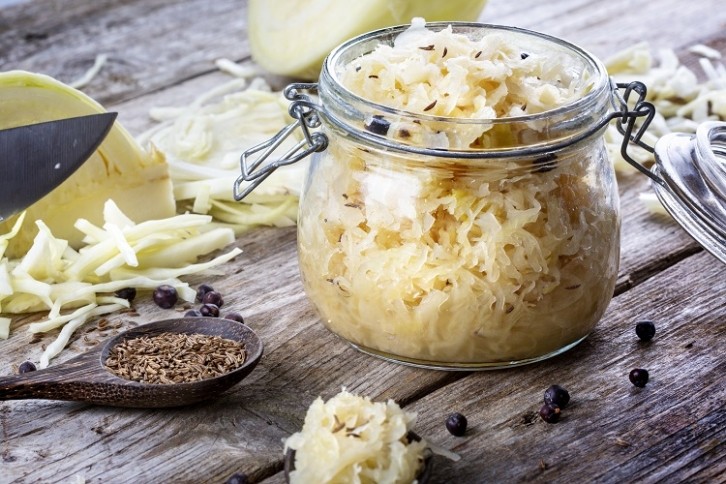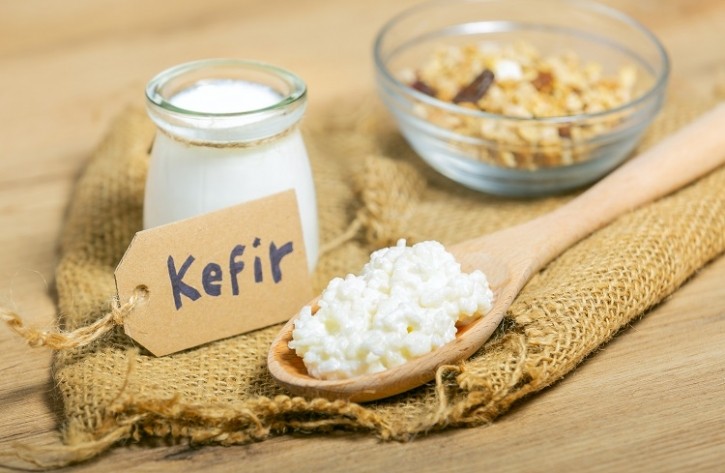[ad_1]
The intestine well being development is one which few could have predicted. However its meteoric rise from a topic primarily mentioned by dieticians and medical doctors to 1 brazenly mentioned amongst associates, household and colleagues, is undeniably spectacular.
Previous to the intestine well being revolution, many individuals solely thought of their intestine when experiencing signs resembling bloating, constipation or digestive points. That each one modified, seemingly in a single day, when consciousness of the facility of the intestine microbiome made intestine well being the go-to time period for total well being.
And with that elevated understanding and curiosity, has come the inevitable elevated demand for gut-friendly merchandise, with figures from market analysis agency SkyQuest valuing the digestive well being merchandise market at $51.7bn (€48.1bn) in 2023.
Moreover, figures from Mordor Intelligence present that the European prebiotic ingredient market is anticipated to develop at a CAGR of seven.11% from 2020–2025 and the European probiotic ingredient market is anticipated to develop at a CAGR of 5.35% from 2020-2025.
It’s no shock then that curiosity within the lesser-known postbiotic is starting to develop because the intestine well being development continues to collect tempo.
What are prebiotics in meals?
Prebiotics in meals are compounds which assist the helpful microorganisms or good micro organism within the intestine (gastrointestinal tract).
Dietary prebiotics are sometimes non-digestible fibre compounds that move undigested via the higher a part of the gastrointestinal tract, supporting the expansion of the ‘good’ micro organism within the colon. Prebiotics had been first recognized and named by educational researcher Marcel Roberfroid in 1995. Prebiotics will be present in a large number of meals, together with almonds, bananas, wholegrain wheat, corn, rye and barley, and flaxseeds
What are probiotics in meals?
Probiotics in meals are stay microorganisms usually described as useful or ‘good’ micro organism as a result of they assist preserve your intestine wholesome. Probiotics can be found in meals resembling stay yogurt.
The primary probiotic, Lactobacillus bulgaricus, was found by Bulgarian doctor and microbiologist Stamen Grigorov in 1905.
What are postbiotics?
Postbiotics, also referred to as metabiotics, biogenics, or metabolites, are a waste product, produced when the physique digests prebiotics and probiotics.
Wholesome postbiotics embrace vitamins resembling nutritional vitamins B and Okay, and amino acids. Postbiotics additionally produce antimicrobial peptides, generally known as host defence peptides, as they assist to decelerate the expansion of dangerous micro organism.
“Postbiotics are substances produced by intestine microbes which have a helpful impact on the physique, this may be instantly or not directly,” Fiona Brannigan, dietitian and founding father of Inspirit Vitamin and Dietetic Consultancy, instructed FoodNavigator. “Postbiotics have been proven to enhance the integrity of the intestine and cut back irritation they usually might assist in the therapy of weight problems, kind 2 diabetes, heart problems and neurological circumstances.”
Moreover, as a result of postbiotics don’t include residing organisms, they’re usually thought of to be safer than probiotics, for folks with a weakened immune system.
“There are considerations over introducing stay microorganisms into the our bodies for these at both finish of the life cycle or those that are immunocompromised,” explains Brannigan.
The rationale for this being that sufferers who’re severely immunocompromised or immunosuppressed don’t have the power to mount an acceptable response to the microbes they arrive into contact with.
enhance postbiotics within the intestine
There are a selection of how to extend postbiotics within the intestine. The primary of those being to eat meals wealthy in prebiotics and probiotics.
“By consuming extra prebiotic and probiotic wealthy meals, the micro organism in your intestine will produce extra postbiotics,” Tami Greatest, practical and integrative dietitian at High Vitamin Teaching, instructed FoodNavigator. “Prebiotic wealthy meals embrace garlic, leeks, asparagus, artichokes, legumes, peas, dandelion greens, bananas, honey, and prebiotic drinks. Probiotic-rich meals embrace non-heat-treated fermented greens, tempeh, miso, sure dairy and non-dairy yogurts, and probiotic drinks.”
Nonetheless, postbiotics may also be shaped via the fermentation course of. Meals resembling sauerkraut, smooth cheeses, fermented breads and buttermilk are all sources of postbiotics and available to shoppers.
There’s additionally the choice to eat postbiotics as a complement.
“Postbiotics will be taken within the type of sodium butyrate or calcium butyrate dietary supplements,” explains Greatest.

How can meals producers become involved in postbiotics?
The rise in consciousness of the microbiome and the elemental position it performs within the operate of the human physique is fuelling an enormous surge in demand for gut-friendly merchandise.
As we all know, postbiotics exist already in sure meals, however can meals producers additional enhance the provision of postbiotics for shoppers?
A method dieticians and well being professionals imagine postbiotics will be maximised in meals is thru the removing of extremely processing. Although there may be a lot hypothesis concerning the well being implications of consuming ultra-processed meals, it’s identified that some meals processing strategies can take away vitamins from substances.
“Producers can assist folks by utilizing entire, unprocessed meals and omitting extremely processed flours and oils,” says High Vitamin Teaching’s Greatest.
Growing the provision of nutrient-rich substances in meals merchandise is one other manner the meals trade might assist shoppers to enhance the provision of pre-, pro- and postbiotics in meals merchandise.
“I feel that the meals trade has a job to play in growing the variety of the plant meals supplied and used,” says Inspirit Vitamin and Dietetic Consultancy’s Brannigan. “By growing variety, we assist to advertise intestine well being in addition to growing fibre.”
What’s the intestine microbiome?
Every of us has trillions of microbes or micro organism residing in our intestine. These are collectively known as the intestine microbiome. The 2 most typical species of useful micro organism present in our intestine microbiome are Lactobacillus and Bifidobacteria. Sustaining a wholesome stability between the useful (good) micro organism and the unhelpful (dangerous) micro organism is prime in supporting a wholesome digestive system, with the intestine now understood to be central to well being, containing greater than 70% of our immune system.
The intestine microbiome has been linked not simply to intestine well being, however with the well being of your complete physique. The gut-brain axis or the communication between the intestine and the mind is one elementary operate at present being researched by scientists and in addition gaining widespread recognition amongst shoppers. The gut-skin axis and the gut-liver axis are two different connections that are starting to be studied and understood. Moreover, intestine well being has additionally been linked to the prevention of colorectal most cancers and different continual illnesses.
[ad_2]


